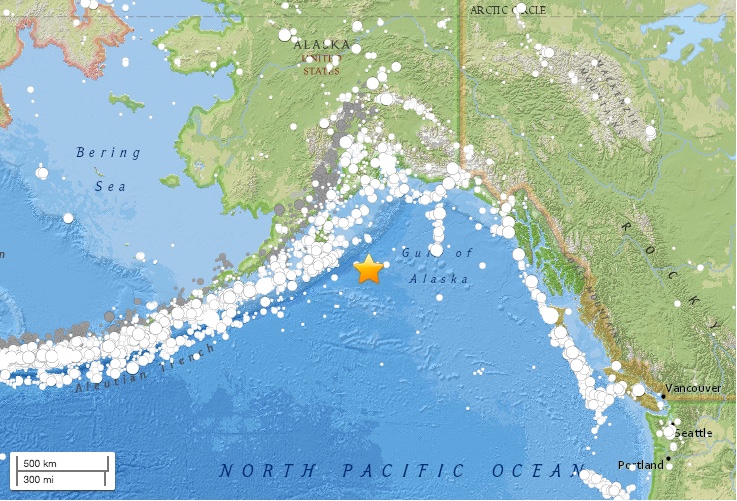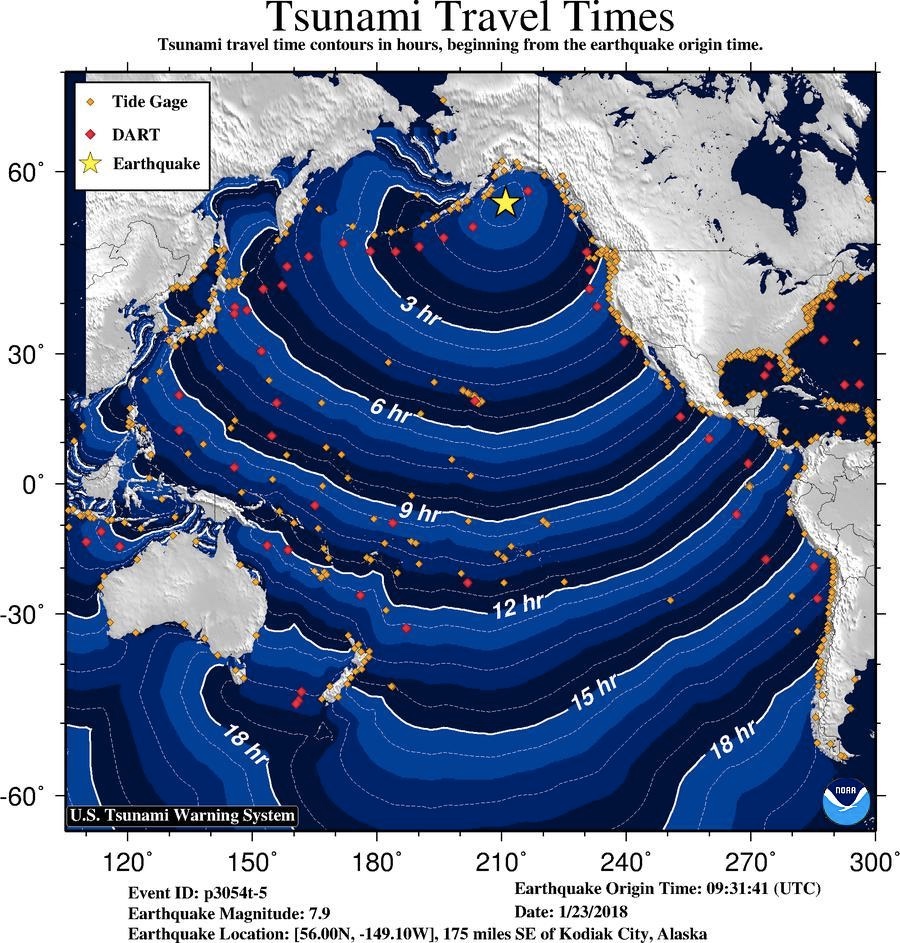Major Earthquake Strikes Off Alaska

Update: This story was updated to indicate the cancellation of the tsunami watches and warnings.
A strong earthquake struck off the southern coast of Alaska early Tuesday (Jan. 23), prompting a tsunami warning, which was later canceled.
The earthquake, which had a magnitude of 7.9, hit 175 miles (280 kilometers) southeast of the island of Kodiak at 12:31 a.m. local time (4:31 a.m. EST), according to the U.S. Geological Survey (USGS). The quake struck at a depth of about 16 miles (25 km).
The Kodiak Police Department urged residents to get to higher ground, and tsunami sirens sounded the alarm in the middle of the night, according to the Anchorage Daily News.
According to the National Tsunami Warning Center (NTWC), a tsunami warning was in effect along a large stretch of coastline, from Canada's British Columbia province to Alaska's Aleutian Islands.
In areas where a tsunami warning is in effect, damaging waves, powerful currents and coastal flooding are possible, the alert from the NTWC said.
A tsunami watch, meanwhile, was in effect for the coastal areas of the United States from Washington state south through California, and residents were urged to stay alert and prepare to take action if needed.
Get the world’s most fascinating discoveries delivered straight to your inbox.
In a message posted to Twitter, Alaska's Gov. Bill Walker said his office is "closely monitoring" the tsunami warnings and urged residents to heed local warnings to move inland or to higher ground.
The tsunami advisories were canceled about 3 hours after the earthquake.
"A tsunami was generated by this event, but no longer poses a threat," an update from the NTWC said. "Some areas may continue to see small sea level changes."
The highest tsunami waves recorded in southern Alaska reached 0.7 feet (21 centimeters).
Original article on Live Science.




